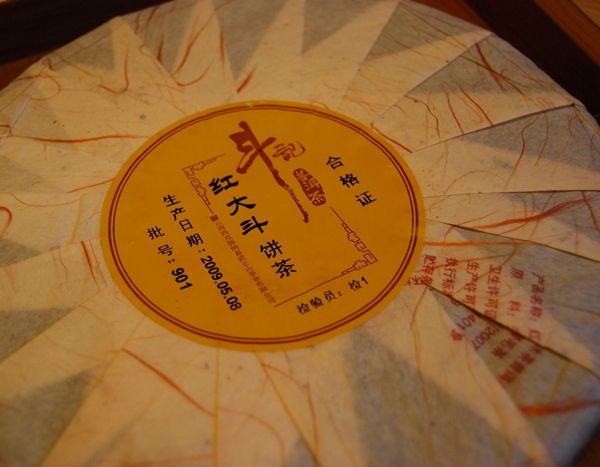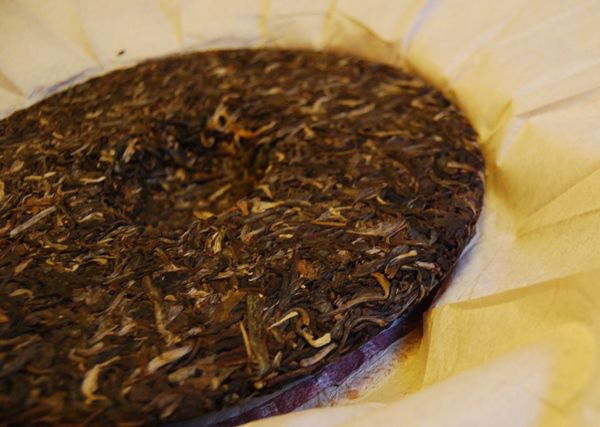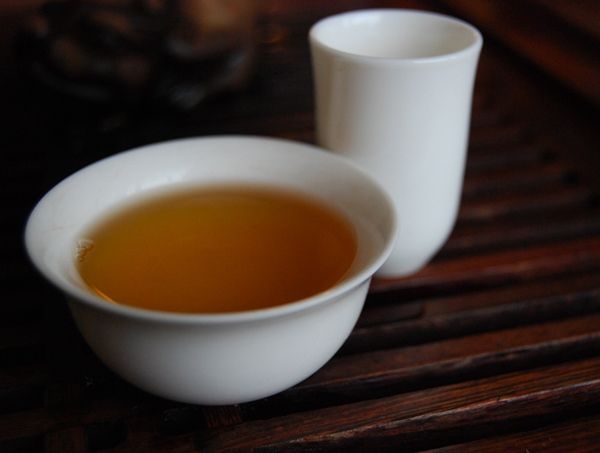I've been enjoying a renaissance of blends, lately. Poking through the contents of my shelves, I came across this blended cake from 2009 that I don't remember buying. If it was a generous gift, then please remind me, and accept my apologies!
"Dadou"
I've been writing about Douji single-mountain cakes from the 2009 period, which corresponds to a rather massive purchase that some chums and I made together from Taobao. Alongside those very solid "premium" productions come the various Douji blends. These latter often arrive as "red" or "blue" (hong- and lan-, respectively) versions of "da" and "shang" cakes ("big" and "upper", respectively). Other types may exist. I still haven't got to grips with their various characters, but those examples that I've bumped into before have been most decent blends.
Gragh
My main gripe (and it is a very minor gripe) with Douji cakes is that it's virtually impossible to get into the wrappers without tearing them, courtesy of the stickers on the back, as pictured above. Gently, gently... pry away the glue, and pray that damage doesn't ensue!
As ever, this Douji cake's compression is much tighter than the average
The cake looks very pleasant, given its relatively humble pricing. Shown above and below, the leaves are rather large, and look healthy. They are flat, big, and even include larger grades - and the odd "yellow leaf" [huangpin], pictured below.
As an added bonus, the cake seems to contain fragments of bamboo, presumably from the material used ultimately to make the tong wrapper.
A blend with particularly good leaves
Douji cakes are not elegant waifs; they are chunky and enthusiastic. The soup (pictured below) may give you a hint of this, from its dense, yellow-orange colour. It will not surprise you to learn that it has a husky sweetness about it, as of cakes that are not entirely "green".
Dense - but not yellow
This strong character cohabits with clean and fresh characteristics, mixed up in a hefty, body of decent thickness. It is tart, sweet, and, oddly enough, rather cooling.
Xiaohu's jetski-rider looks on in approval
If anything, this reminds me of the "coloured peacock" (kongque) blends from Menghai Tea Co. - it is a good, strong, clean example of a mainstream cake. I enjoyed the session, perhaps because it marked the end of a period of student examinations, but it is not the most memorable cake in the world.
I recall Douji blends used to be available in little bricks; maybe that's the best way to buy them - you might not wish to commit to owning an entire cake of this, but it is good to have some around for a brisk, lo-fi session.
(A quick check reveals that China Chadao sell the 2011 and 2010 versions of this for $14 and $16, respectively, which is a good, low price and appropriate for these solid little cakes. It seems that the range of blends has also expanded to take in "yu" and "jin" - probably jade and gold - versions of the blends...)







5 comments:
Speaking of Menghai, what can you tell me about 云古民间 bings? I've got a cheap n' cheerful 2010 I'm going to take a kick at soon.
Thanks; it’s nice to know about this unpretentious cake.
But I have a couple of schoolmarmish emendations to submit:
(1) Douji’s other name is Yiwu Zheng Shan, not Zhang.
(2) Douji’s brand name indicating “upper” is Shang Dou, not Sheng.
I don’t doubt you know these things, but some readers won’t.
Dear Kate,
I've never tried the Yungu Minjian brand - they look cheap and quite possibly cheerful, indeed! I'll be hoping to read of your experiences with them.
Dear Lew,
Thanks - these were typos, from writing while tired. It's good to have 'em squished. :)
Toodlepip both,
Hobbes
I remember liking the 2009, but the 2011 is no good.
I enjoyed your likening of it to parmesan cheese. :)
Post a Comment